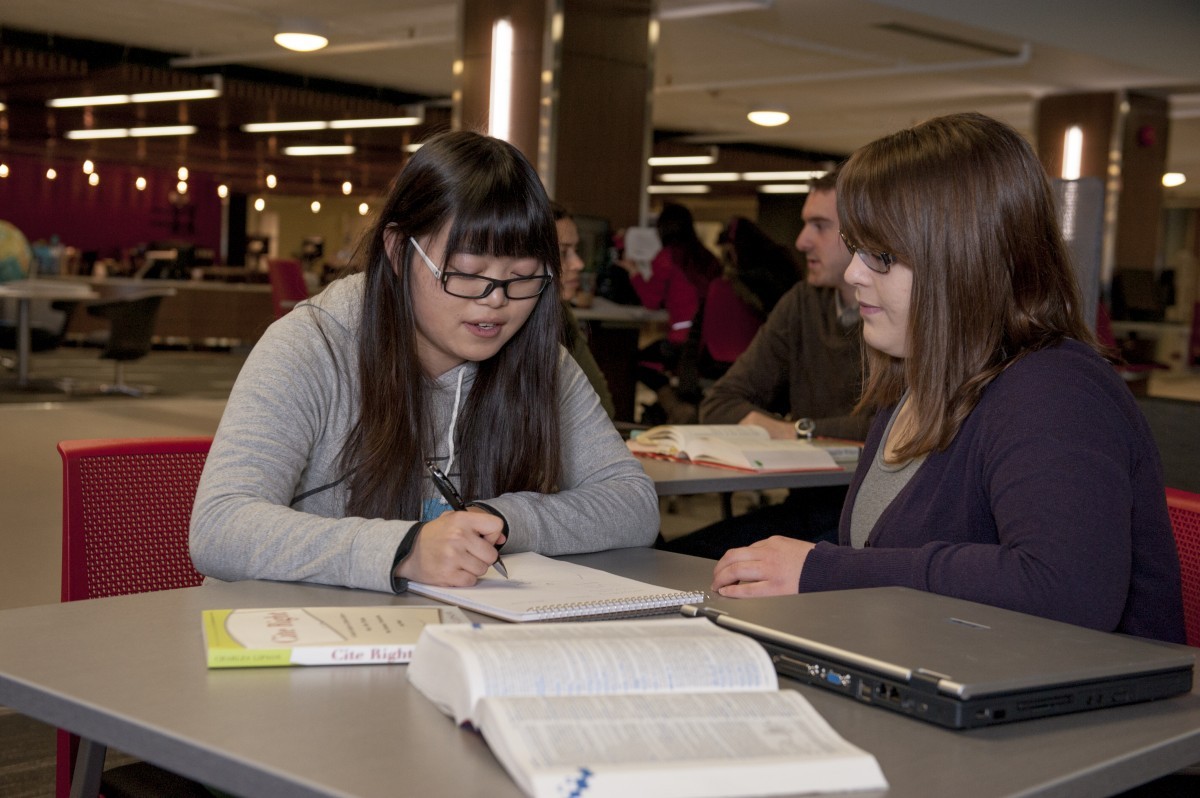
Paraphrasing: A Bitter Slice of Academic Pie
An English as an Additional Language specialist shares tips to make it more palatable
The following article is published as part of the Academic Integrity Initiative, featuring the writing of University of Manitoba faculty, staff and students.
October is Academic Integrity Month! Visit our website for more information on events, and follow us on Twitter.
Ask a native English speaker to rewrite something in her own words, and she’ll use a familiar bag of tricks – the English language. Ask a non-native English speaker to rewrite something in her own words and she’ll use a familiar bag of tricks – her first language – not English.
One can see how this might complicate things.
To paraphrase in another language, multilingual writers may need to take several additional steps that can be time and resource intensive. Finding the right vocabulary, building the right sentence structure, embedding the paraphrase in the existing text and writing with rhetorical confidence in general can make paraphrasing daunting and aggravating. The time commitment and perceived difficulty paraphrasing many sources for a research paper can easily lead English as an additional language (EAL) writers to compromise their academic integrity by copying or patch paraphrasing sources.
There are two main challenges when it comes to paraphrasing:
First, one must fully and correctly capture what the original writer intended. In order to do this, the reader needs to reach a clear understanding of what the original text means. The good news is that once the text’s meaning has been thoroughly scrutinized, the reader comes away a more enlightened scholar. And isn’t that what it’s all about?
After overcoming the initial challenge of clearly understanding the foreign academic language and academic concepts of the original writer’s work, the second challenge is writing the paraphrase. Here the writer will need all of her linguistic tools to recraft the original text. The words must be changed to simpler, or in some cases, more complex terms, and they must be recast in a completely different sentence structure. To perform this trick of linguistic sorcery, a non-native English speaker must be able to access a large lexicon and have a variety of grammatical tricks up her sleeve. The writer will need to pick and choose the best words and manipulate English grammar and sentence patterns with the finesse and confidence expected of a native English speaking university-level writer.
This is the part that seems most daunting and counterintuitive to many non-native speakers. After all, how can someone who is still learning the language write the text in a better way than the native English speaker? The text is already written in perfect English!
And, why rewrite at all, when copying the text seems most respectful of the original writer’s idea? Unfortunately, as many non-native speakers already know, culture and in this case, academic culture, is not always intuitive, to say the least.
Paraphrasing is a multilayered, bitter tasting slice of academic pie, but…. it is NOT completely unpalatable. Like all academic literacy skills, paraphrasing gets easier with practice and as you gain more control over the English language.
Here are some suggestions for making this task less daunting.
- Find and underline the main ideas of the text you need to paraphrase.
- Use your dictionary or other tools to understand the vocabulary and meaning of each idea.
- Underline any technical words and proper nouns. It’s OK to use these.
- Put away the text and then rewrite it from memory. If you need to use words from your first language to keep the gist of the ideas, do so.
- Compare the original with your version. At this point your paraphrase may still follow the same sentence structure as the original and you may still be using some of the same words.
- To break free from the original structure you can use several strategies. It is important to use more than one of these strategies:
- Reorder the main ideas
- Choose a different member of the word family
- Change the sentence type
- Change the connectors and the logical relationship between the main ideas
- Add a signal word to introduce the paraphrase
- Tidy up the grammar and the vocabulary use.
- Compare this second version to the original to make sure you have kept the original meaning.
- Add the appropriate in-text citation according to your discipline’s style guide.
- If your paraphrase meets the following guidelines you have a good paraphrase:
- The meaning is the same as the original
- The only words that are the same are the technical and proper nouns
- The sentence pattern is completely different
- There are enough cues to tell the reader that this section of the text is not originally yours
Visit the Academic Learning Center website to book an appointment with one of our writing tutors attend a paraphrasing workshop, or check out our online resources for multilingual writers. If you feel you need language support for paraphrasing, make an appointment with the ALC English as an Additional Language Specialist Instructor.
Antoanela Denchuk is an EAL specialist and instructor with the Academic Learning Centre.






